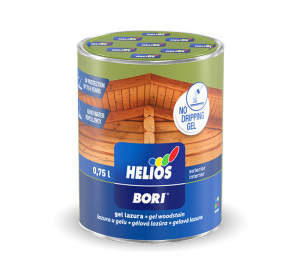The newest combined-model ANOVA performance revealed significant fundamental effects to possess Gender [F
Try out dos thinking-said SSQ total score philosophy at standard (BL), just after visibility (aftereffect; AE1), and you may step one kissbrides.com proceed the link now h article visibility (aftereffect; AE5)
Complete datasets from 117 of the 120 participants in Experiment 2 were obtained and combined with the 30 VR participants from Experiment 1 to run the Aple size of 147 participants. The combined data led to a total of: 40 female IPD Fit participants (19 were low MHQ; 21 were high MHQ), 45 male IPD Fit participants (25 were low MHQ; 20 were high MHQ), 34 female IPD Non-Fit participants (15 were low MHQ; 19 were high MHQ), and 28 male IPD Non-Fit participants (15 were low MHQ; 13 were high MHQ). Thus, when combining Experiment 1 and 2 data, there were a total of 85 IPD Fit VR participants and 62 IPD Non-Fit VR participants. (1, 139) = 7.36, p = 0.008] and MHQ, [F(1, 139) = 5.40, p = 0.022], as well as a significant interaction of Gender ? MHQ ? IPD Fit [F(step 1, 139) = 4.24, p = 0.008]. The results revealed that, as expected, females whose IPD fit the VR headset experienced cybersickness in a manner similar to males (see Table 8 and Figure 2-Bottom). Specifically, immediately after VR exposure, the average Recovery SSQ TS levels for those in the IPD Fit condition were high in both those with a high motion sickness history (females: AE1 SSQ TS mean = ; S.D. = ; males: AE1 SSQ TS mean = ; S.D. = ) and those with a low motion sickness history (females: SSQ TS mean = ; S.D. = ; males: AE1 SSQ TS mean = ; S.D. = ). There were no significant gender differences in the IPD Fit groups at AE1 (n = 85), regardless of motion sickness history [F(step three, 81) = 1.029, p = 0.384]. All those who could fit their IPD to the VR headset recovered within 1 h post VR exposure, regardless of motion sickness history (high motion sickness history females: AE5 SSQ TS mean = 7.48; S.D. = ; males: AE5 SSQ TS mean = 5.98; S.D. = ; low motion sickness history females: AE5 SSQ TS mean = 4.53; S.D. = ; males: AE5 SSQ TS mean = 0.45; S.D. = 5.10. There were no significant gender differences in the IPD Fit groups at AE5 (n = 85), regardless of motion sickness history [F(step 3, 81) = 1.29, p = 0.283]; further these groups had no significant differences from BL at AE5 [t(84) = ?1.656, p = 0.104].
There had been no tall gender effects on the IPD Non-Match groups within AE1 (letter = 62), regardless of action disease records [F
Immediately after VR exposure, the adverse effects in those that had an IPD non-fit were, on average, high in both those with a high motion sickness history (female AE1 SSQ TS mean = ; S.D. = ; male AE1 SSQ TS mean = ; S.D. = ) and those with a low motion sickness history (females AE1 SSQ TS mean = ; S.D. = ; males AE1 SSQ TS mean = ; S.D. = ). (3, 58) = 2.25, p = 0.092]. There was a statistically significant difference in AE5 SSQ TS among the groups [F(step 3, 58) = 4.19, p = 0.009; n = 62]. A Tukey post-hoc analysis showed that these adverse aftereffects persisted long after VR exposure only for those females with an IPD non-fit and high motion sickness history (females AE5 SSQ TS mean = ; S.D. = ) as compared to females with low motion sickness history (AE5 SSQ TS mean = 4.99, S.D. = 9.76, p = 0.047), males with low motion sickness history (AE5 SSQ TS mean = 1.99, S.D. = 5.45, p = 0.033), or males with high motion sickness history (AE5 SSQ TS mean = 0.86, S.D. = 7.19, p = 0.034). Both females (female AE5 SSQ TS mean = 4.53; S.D. = ) and males (male AE5 SSQ TS mean = 1.99; S.D. = 5.45) with an IPD non-fit and low motion sickness history recovered by the final measurement period. Females in the IPD Non-Fit, High Motion Sickness History condition also had, on average, less VR exposure duration (i.e., tended to drop-out; Mean Exposure Duration = min; S.D. = 6.42) as compared to both males (Mean Exposure Duration = 20 min; S.D. = 0.00, i.e., no dropouts) and females (Mean Exposure Duration = min; S.D. = 0.544) in the IPD Non-Fit, Low Motion Sickness History conditions; this difference was significant [F(7, 139) = 2.71, p = 0.012].


